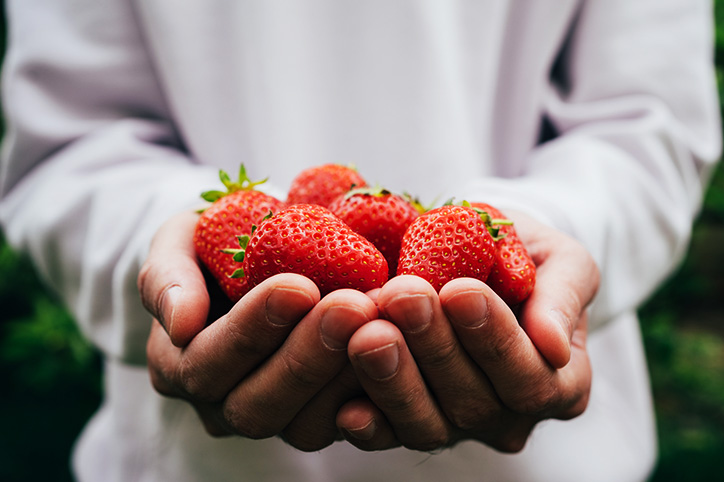Once again strawberries come out on top, in a bad way, topping the Environmental Working Group (EWG) Dirty Dozen list, a guide to pesticides and produce. This marks the sixth time in a row that the fiber-rich berry places first in the EWG’s, a research and advocacy organization for human and environmental health, yearly list. For the first time, however, bell peppers and hot peppers have made the list.
How is the list put together?
Every year, the United States Department of Agriculture (USDA) tests 46 popular fruits and vegetables for residues of potentially harmful chemical pesticides, which this year were found on nearly 70 percent of the non-organic fresh produce sold in the U.S. Before testing fruits and vegetables, the USDA washes, scrubs and peels them, as the typical consumers would. After reviewing some 46,000 or so produce samples, the “dirty dozen” and “clean fifteen” lists are born.
EWG’S DIRTY DOZEN FOR 2021
- Strawberries
- Spinach
- Kale, collard and mustard greens
- Nectarines
- Apples
- Grapes
- Cherries
- Peaches
- Pears
- Bell and hot peppers
- Celery
- Tomatoes
There were some key findings, outlined by EWG, in their 2021 report. More than 90 percent of samples of strawberries, apples, cherries, spinach, nectarines and leafy greens tested positive for residues of two or more pesticides. A single sample of kale, collard and mustard greens had up to 20 different pesticides. On average, spinach samples had 1.8 times as much pesticide residue by weight as any other crop tested. Hot peppers and bell peppers had the most pesticides detected, 115 pesticides in total and 21 more pesticides than the crops with the second highest amount – kale, collard and mustard greens.
EWG’S CLEAN FIFTEEN FOR 2021
- Avocados
- Sweet corn
- Pineapple
- Onions
- Papaya
- Sweet peas (frozen)
- Eggplant
- Asparagus
- Broccoli
- Cabbage
- Kiwi
- Cauliflower
- Mushrooms
- Honeydew melon
- Cantaloupes
Here too, in the list of the 15 items with the lowest amounts of pesticide residues, the EWG called out some notable findings. Fewer than 2 percent of samples of sweet corn and avocado showed any detectable pesticides. The first seven Clean Fifteen crops tested positive for three or fewer pesticides on a single sample. Almost 70 percent of Clean Fifteen fruit and vegetable samples had no pesticide residues. Only 8 percent of Clean Fifteen fruit and vegetable samples had two or more pesticides.
Taken together these two lists form part of a more comprehensive one put together by the EWG, the Shopper’s Guide, which shows how all the tested fruits and vegetables rank based on their total pesticides scores.
This isn’t an excuse to swap strawberries with Doritos!
While these lists are helpful to have on hand when deciding what may or may not be worth buying organic, it’s important to remember that when organic versions are unavailable or not affordable, EWG and health experts still advise consumers to continue eating fresh produce, even if conventionally grown. The health benefits of a diet rich in fruits and vegetables will always trump the risks of pesticide exposure. Just make sure to always wash your produce very well!
